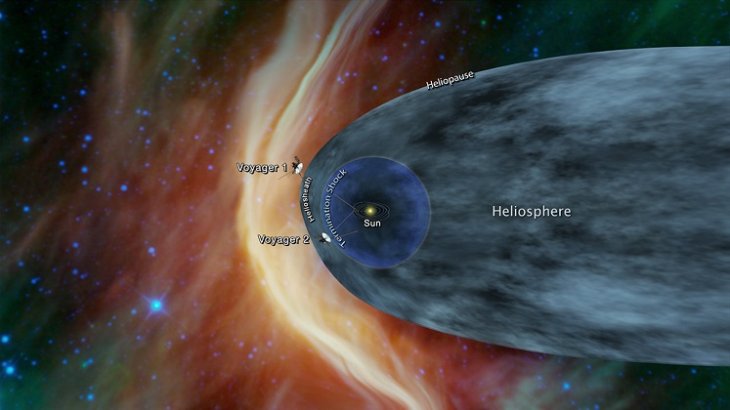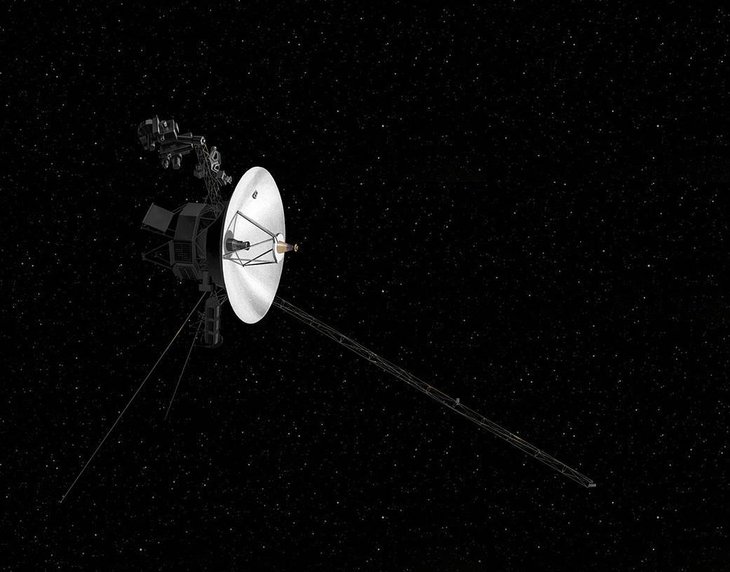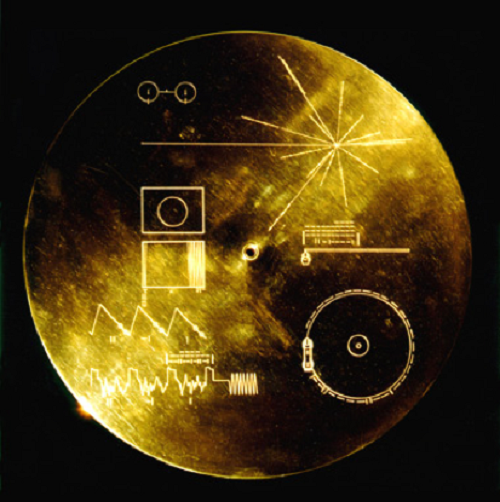After 41 Years, NASA’s Voyager 2 Has Finally Escaped Our Solar System, Entering Deep Space
Dhir Acharya - Dec 13, 2018

The Voyager 2 has confirmed it's left our Solar system and entered deep space. This is the longest-running mission ever.
- Russia Will Build A Lunar Space Station With China Because It's Done With NASA
- NASA Reveals 20 Most Stunning Earth Images Taken From The ISS
- Indian-Origin NASA Researcher Discovers Jupiter Moon Europa Glows In The Dark
It can’t be denied that space is our ultimate limit, and we won’t stop until we leave no stone unturned.
On the journey to unlock the universe’ secrets, we have crossed another milestone by sending the second man-made spacecraft out of the Solar System we live in, to enter the interstellar space.

On December 11, NASA made an announcement that the Voyager 2 spaceship has made its entrance into another space region, in which there are a lot of particles are pelting at it from out of Solar System. So, the spacecraft has escaped the Heliosphere, a bubble-like, vast space region around the Sun that is created with plasma and magnetic fields by the Sun itself, and entered deep space.
In a press conference, Georgia Denolfo, NASA astrophysicist said that he felt this time is an exciting period for space exploration. Today, we are not only able to look into the galaxy through the Heliosphere but can actually step outside with a Voyage.
Inside the Heliosphere, particles pelting is caused by solar wind, but outside that region of space, it’s all about cosmic rays. At the Heliopause, the interstellar medium stops the solar wind; on November 5, the Voyager 2 confirmed it flew past this control line.

The Voyager 2
The Voyager 2 is the next attempt after the Voyager 1, the first man-made spacecraft in history to pass the Heliopause six years ago. Notably, both spaceships made its launch in 1977, and the Voyager 2 actually entered space 16 days before the Voyager 1 did. The two craft are named as such because NASA scientists knew for sure the Voyager 1 would emerge first since it was launched on the shorter path. On the other hand, the scientists sent the Voyager 2 on a longer route, making it the first spaceship ever to visit Neptune and Uranus.
Voyager 2 has also become the longest active mission of NASA, the craft has made it through 41 years, 3 months and 22 days.
Project manager of NASA’s Voyager program, Suzanne Dodd, said that it’s such relieve to see both Voyagers managed to survive long enough to make this milestone. This achievement is something the team has been waiting for years. Now, the next excitement is to learn the outside of the Heliosphere through the Voyager 1 and 2.
Both Voyagers carry an audio-visual disc covered in gold called “Golden Record.” This disc contains photos of our home planet, and life forms on it, greetings spoken in different languages, various scientific data as well as a mixture of mass Earth sounds like whales, sea waves, baby cry, and different music audios from various years.
NASA put together this data storage module and sent it with the Voyagers in case of encountering aliens. Then, interstellar creatures can use this as a quick primer.

However, there’s still a much longer journey awaiting the ships and NASA since it can be light years from the Voyagers to the nearest stars. That means we may have to wait other hundreds of years. Till then, what NASA can, and is trying to do is spending all effort to make the spacecraft to last 50 years.
Featured Stories

Features - Jul 01, 2025
What Are The Fastest Passenger Vehicles Ever Created?

Features - Jun 25, 2025
Japan Hydrogen Breakthrough: Scientists Crack the Clean Energy Code with...

ICT News - Jun 25, 2025
AI Intimidation Tactics: CEOs Turn Flawed Technology Into Employee Fear Machine

Review - Jun 25, 2025
Windows 11 Problems: Is Microsoft's "Best" OS Actually Getting Worse?

Features - Jun 22, 2025
Telegram Founder Pavel Durov Plans to Split $14 Billion Fortune Among 106 Children

ICT News - Jun 22, 2025
Neuralink Telepathy Chip Enables Quadriplegic Rob Greiner to Control Games with...

Features - Jun 21, 2025
This Over $100 Bottle Has Nothing But Fresh Air Inside

Features - Jun 18, 2025
Best Mobile VPN Apps for Gaming 2025: Complete Guide

Features - Jun 18, 2025
A Math Formula Tells Us How Long Everything Will Live

Features - Jun 16, 2025
Comments
Sort by Newest | Popular